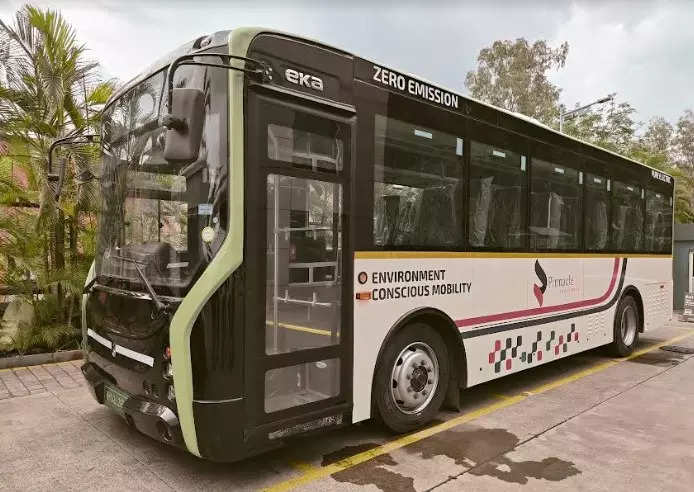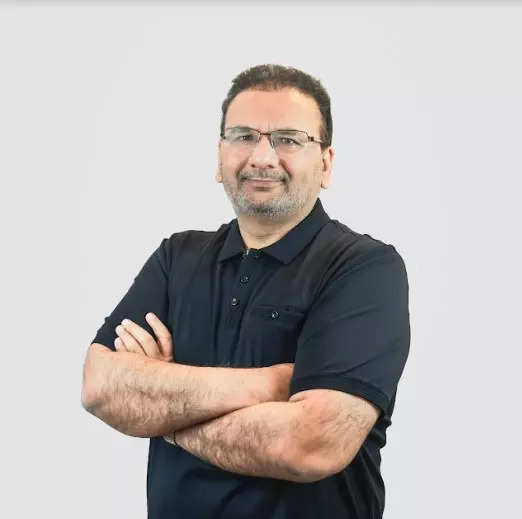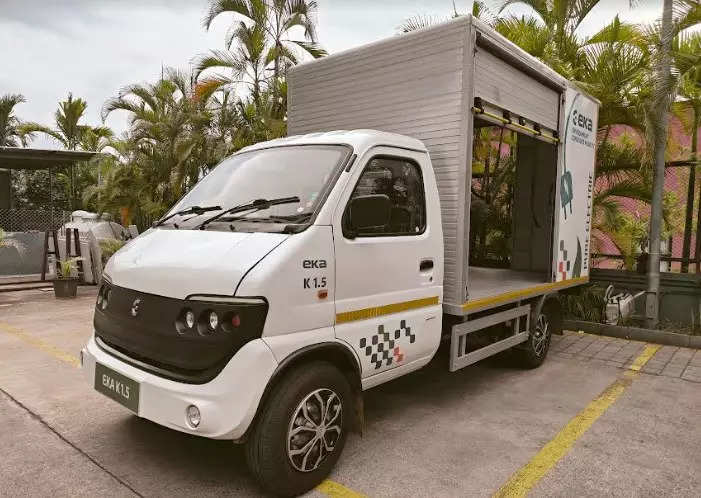
New Delhi: The environment at Eka Mobility’s office in Pune is a contrast to the well laid out, orderly scenario of a corporate office. It’s teeming with people, buzzing ambience noise, which may be reflecting a need to swiftly tap opportunities in an emerging business, before the big boys in the industry get more serious in the EV space.

Dr. Sudhir Mehta, founder and Chairman, Eka Mobility, believes there’s an opportunity window, of maybe a year and a half or two, for new players like Eka Mobility to make the most of and put things in place well and also compete with the established OEMs in the new EV game when they make the big moves.
Towards that he has hired a few industry veterans, some bus specialists, and youngsters, to build EVs, in-house software technology, and also lean manufacturing plants. “We have people who worked in the old technology (ICE) and are moving to new technology (EV), but then we have a bunch of guys who don’t know what the old technology was,” Dr. Mehta told ETAuto.

The team is also busy preparing for the product portfolio build-up. Eka Mobility currently has only one e-bus, 9-metre long, and an e-SCV with a 1.5 tonne payload. According to the company, a hundred 9-metre e-buses have been sold, and around 10 e-SCVs are ferrying cargo in the Mumbai-Pune route.
While it has entered the cargo CV segment, the focus mainly is on the people carrier segment. A 12-metre e-bus, currently undergoing homologation, is planned for introduction later this month, which will be followed by a 7-metre e-bus planned for launch by September this year.

Citea, an existing low-floor e-bus model of European bus market leader VDL, also an investor in Eka Mobility, is planned for launch next year. “So by next year, we’ll have a full range of buses, and coaches, and we will have a light commercial vehicle,” says Dr. Mehta, who’s quite bullish about the prospects of electric buses in India.
And that’s fuelled by India’s healthy economic growth, and currently much lower than the required number of buses to move India’s people. “Today, India has one of the lowest penetrations of buses in the world, 1.6 buses per 1000 people. It’s 6.5 in South Africa, which is not even a fully developed market. It’s 8 or 9 in China,” he says.
Given the cost advantage India has as a manufacturing hub, the Citea is also planned to be exported from here. Leveraging manufacturing for competitiveness.
Any EV wins hands down against ICE vehicles when it comes to running costs. Compared to a diesel vehicle the running cost can be as low as 20% of the ICE vehicle. However, it’s the EV’s upfront cost, most so in the commercial vehicle segment, which is the biggest challenge. Eka Mobility looks to the manufacturing part of the business to help here significantly. “The thought process is that for EVs to be successful, we want to bring down the cost, the differential to be the least possible compared to an ICE vehicle, so we don’t need large factories in the future. We have created what we call a kit concept. So even for export, we will create what we call a ‘bus in a kit’,” Dr. Mehta said.
These “micro factories” are being designed as lean manufacturing hubs. “The lower the area per square metre per bus or vehicle, the leaner the plant,” explains Anil Baliga, President, Eka Mobility. Baliga, former VP – Bus and Applications, VECV, is among the seasoned industry professionals hired to build Eka Mobility. The lean plants will use the Maynard Operation Sequence Technique (MOST), considered as the “best productivity standard in the world”
The target for Eka Mobility is to be able to set up a leaner format plant in “less than USD10 million (around INR 80 crore)”. These plants will be more of assembly units rather than full-fledged manufacturing facilities. The strategy behind it is also to have local operations in overseas markets right from the start at a much lesser cost, even if the market demand is in hundreds. This approach will also allow meeting norms of local sourcing of parts wherever applicable.
The African continent, mainly Ethiopia, Kenya, Tanzania, Mozambique, South Africa,.
Is in Eka Mobility’s radar as the first set of overseas markets in its exports strategy, where Japan’s Mitsui, a global trading company, will play a major role. Nobuyoshi Umezawa, a Mitsui veteran, and recently appointed as Eka Mobility’s Chief Strategy Officer, is responsible for chalking out the EV maker’s plans for overseas markets,
Manufacturing in India
Currently, Eka Mobility produces its EVs in a facility at Koregaon-Bhima, outside Pune. It’s next plant is scheduled to be commissioned in Chakan, also near Pune, by September this year. Around INR 200 crore is earmarked for this facility with a capacity to produce 3000 buses, and around 15,000 e-SCVs, and three-wheelers. The total area of this manufacturing plant will be around 17,900 square metres.
A “mega plant” is planned to be set up in Pithampur, Madhya Pradesh, next year, which will also see an initial investment of around INR 200 crore. ”Eventually we want to make our components there. So axles, motors, all that we will make there. That’ll be the second step in our evolution, to get our cost down.”
Mitsui and VDL, who collectively hold 33% stake in the company, after a total investment of USD 100 million are expected to play crucial roles in the journey. And, all employees too will have a stake in the game, not only because of their contributions, but also because Eka Mobility plans to offer ESOPs to each of them on completing a year’s service.
India plans to replace 800,000 diesel buses with electric buses by 2030. That’s a big opportunity to be tapped. Last financial year, the domestic electric bus market size stood at around 3,600 units. The traction is set to get only better hereon. Investments in building its own IP, with a strong focus on software, is the core focus for the company, Dr. Mehta said.
He also believes “we are a small company. We are understated, but we believe that this is a chance for us”. With all the upcoming chances in the emerging EV industry, Dr. Mehta expects Eka Mobility to start booking profits in a year and a half or two.

















